“Attention is the beginning of devotion.”
-Mary Oliver
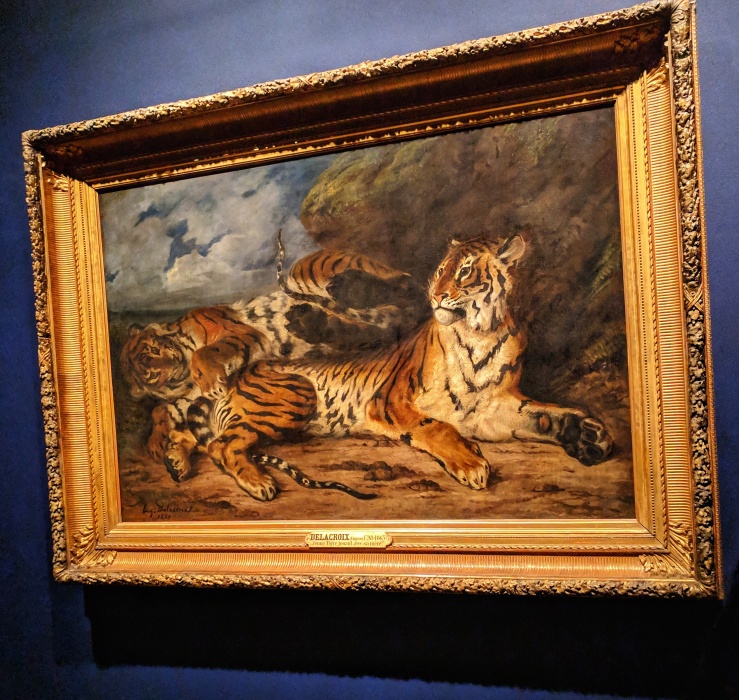
This has been a year of incredible highs and incredible lows, the latter all self-inflicted. Wearing myself so far down I was susceptible to a week in the hospital with pneumonia. To spraining an ankle so hard I was in a boot for two weeks. But one thing that always helps center me, that lights and maintains the fire called wanting to go on, is attention. And no cultural activity centers me more, nothing puts me in my place, nothing bows the strings in my soul like trying to focus on visual art.
And I will say this in all three posts but the best macro-gratitude exercise I undertake every year is keeping track of what I see/listen to (I need to be better about tracking what I read) and going over it at the end of the year. I took in around 75 exhibits this year and narrowing it down to 20 was hard. I am, always, very, very lucky.
Anyone else sparked by this or who bothers to read these, I appreciate you . Drop me a line, let’s talk about what we both saw or what I’m an idiot for leaving off. Everything here is in Columbus and any photo is taken by me unless stated otherwise.
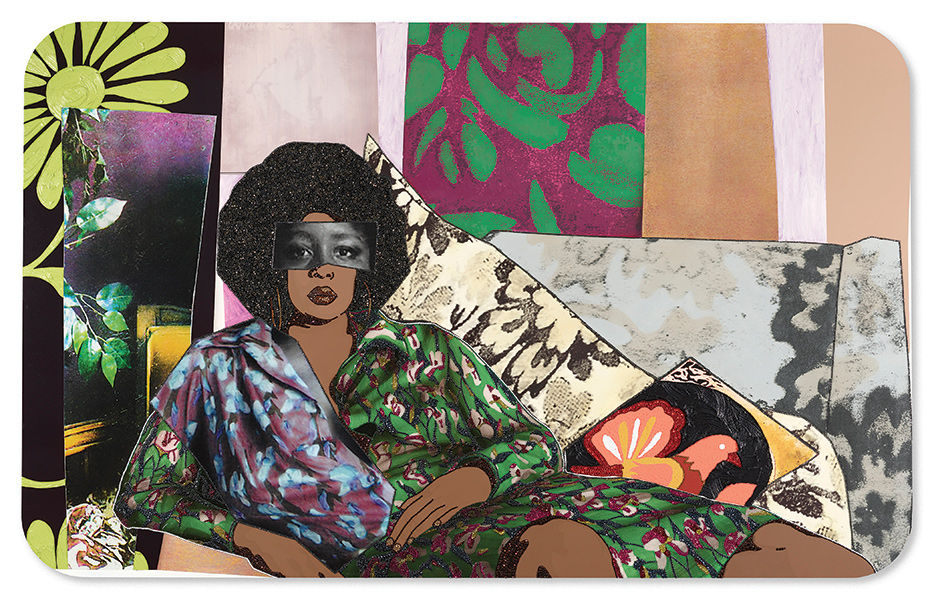
1. Mickalene Thomas, I Can’t See You Without Me (Wexner Center for the Arts) – I can’t think of an artist who better epitomizes taking all of art history and synthesizing it into a voice utterly, unmistakably hers, than Mickalene Thomas. The bounty of riches presented with I Can’t See You Without Me was like tapping into a deep vein and realizing it’s full of stars: completely personal, in touch with the world (and worlds behind the world) and full of monumental, magic beauty. Everything I love in art was in this show and while I visited it five or six times, I regret not seeing it seven or eight more.
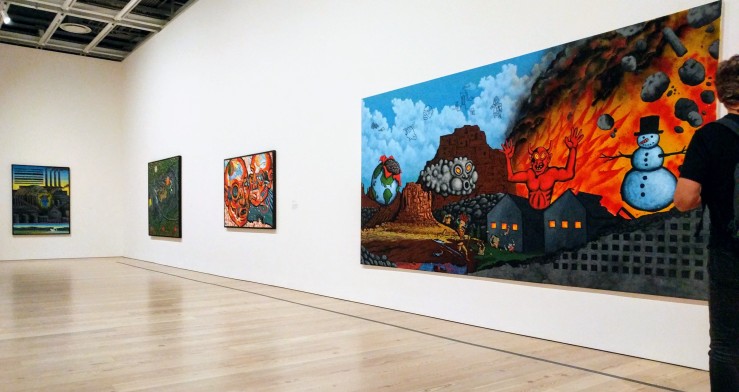
2. David Wojnarowicz, History Keeps Me Awake at Night (Whitney Museum of Art, NYC) – Dispatches from one era when the world was on fire still shone brightly in this dazzling retrospective of one of American art’s foremost poets of ecstasy and rage.
3. Yayoi Kusama, Infinity Mirrors (Cleveland Museum of Art, Cleveland) – I still remember the first time I saw one of Kusama’s Infinity Mirror Rooms, at my first Whitney Biennial. It was an eye-opening reminder of the power of repetition to unlock a world and a potent mix of serenity and discord. I came to love the permutations of her varied work over time, most prominently in a stuffed, ranging retrospective at the Whitney. but this hyper-focused touring show was a concentrated dose of the mix of sensations that first drew me in.
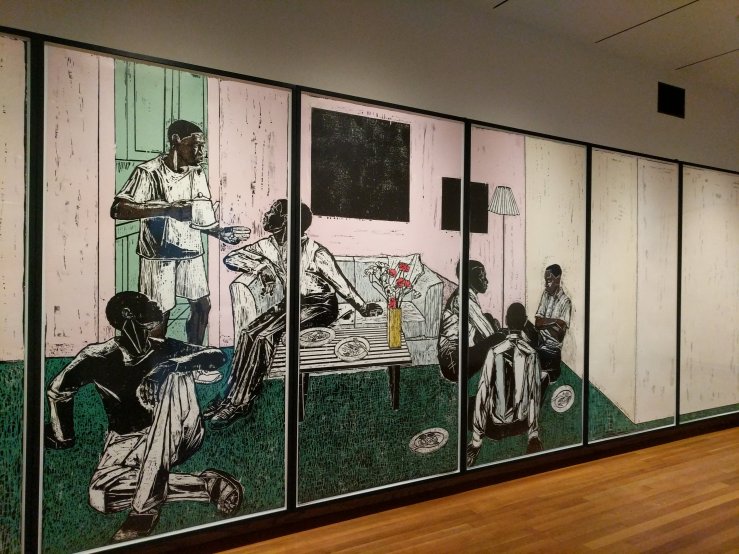
4. Kerry James Marshall, Works on Paper (Cleveland Museum of Art, Cleveland) – An epic-scaled domestic scene in panels fragmenting it like a comic strip and also recalling large Renaissance triptychs, was surrounded by other drawings in this tight, sharp show of an artist who only gets better.
5. Various Artists, Trigger: Gender as a Tool and Weapon (New Museum, NYC) – This ferocious trip through depictions of gender ended a January New York trip on a head-spinning succession of high notes, including Ulrike Muller’s jagged abstractions, a dazzling Mickalene Thomas video collage. This summed up everything I love about the New Museum when it’s clicking, work within the last 10 years – without cheaply valorizing youth – that summed up and exploded 40 years of the institution. A good sign for the future of the Wexner Center as the curator of this spectactular exhibit is the new director to succeed Sherri Geldin as director.
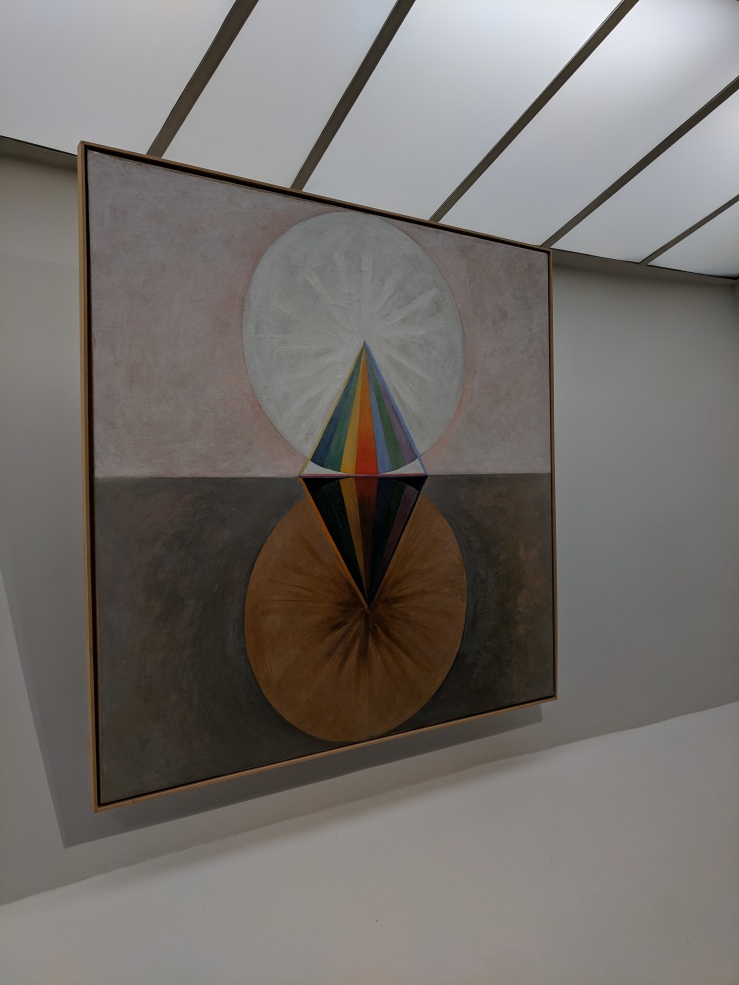
6. Hilma af Klint, Paintings for the Future (Guggenheim, NYC) – This hypnotic, transfixing, spiritual show cemented another contender for an originator of abstraction and opened my eyes to a voice I knew almost nothing about. A paean to the magic of drilling down into oneself with specific instructions not to show most of her work until 20 years after her death, working on instructions from spirits she communed with through a seance group. You couldn’t write af Klint’s story in a way that seemed believable but the art was as accessible as layered and elusive.
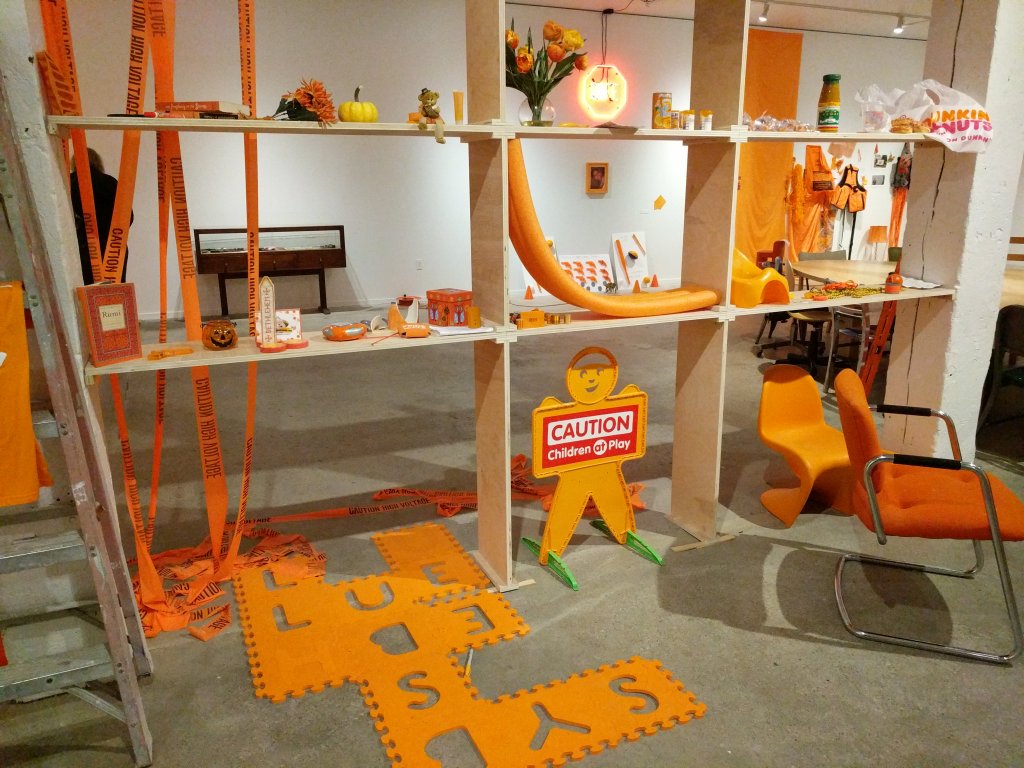
7. Michael Rakowitz with Amber N. Ford, M. Carmen Lane, RA Washington, and Amanda King with Shooting Without Bullets Youth Photographers; A Color Removed (SPACES Gallery, Cleveland) – Rakowitz in collaboration with a variety of local artists created an assemblage of the color orange, underlining the irony of trying to blame the deaths of children on the warning color or lack thereof. And it was one of the most devastating things I’ve ever seen in my life. A quiet temple to absence, loss, and rage.
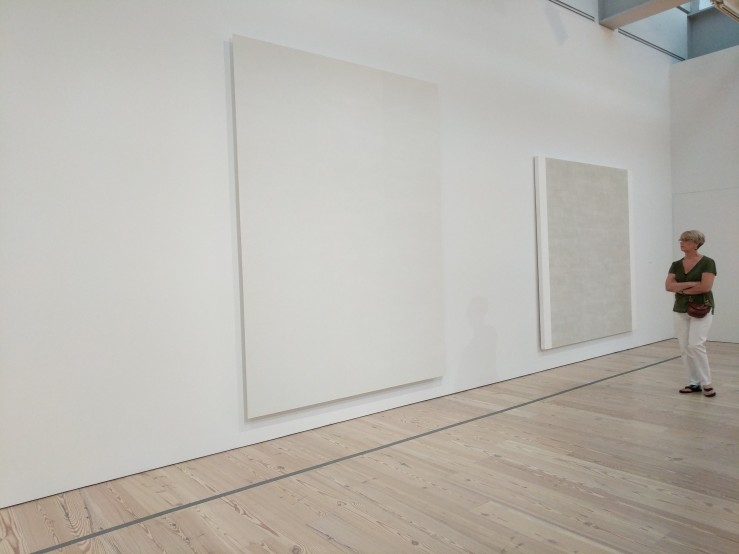
8. Mary Corse, A Survey in Light (Whitney Museum, NYC) – I walked into the Whitney that sweltering July day knowing I loved Wojnarowicz, steeped in him since I was a teenager. I had no such knowledge or preconceptions of Corse and her deceptively simple canvases pulled my breath right out of my body. Working with the most fundamental element not just of painting but of sight – light – she made me look at it in a different way that recalled the meditative work of so many earlier artists but was still like nothing I’d seen.
9. Eugene Delacroix, Delacroix (Metropolitan Museum of Art, NYC) – This presentation of one of the old masters I knew the least about was refreshing in a way art of that vintage doesn’t usually affect me. The breadth of his literary influences and the wide range of stylistic techniques were dazzling; a self-portrait casting himself as the main character in Scott’s Bride of Lammermoor led me to dub him the creator of the cosplay selfie. And it was not just the Musee de Nancy frame that led me to say, and my companions to repeat the rest of the weekend, “Delacroix is lit.”
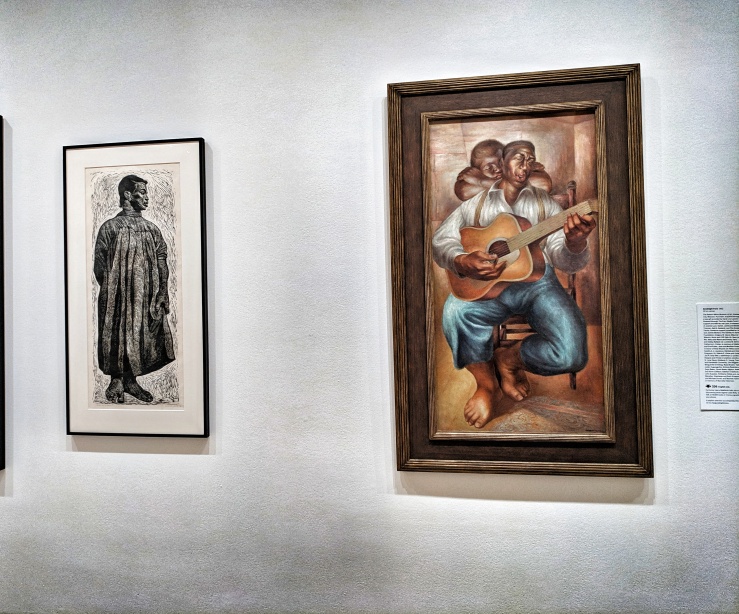
9. Charles White, A Retrospective (Museum of Modern Art, NYC) – Another artist I wasn’t as familiar with as I should have been, a 20th-century American, this selection of White’s work was the perfect thing to see upon first arriving in the city. Enormous, dazzling, powerful and rich with the contradictions and terror still reverberating through the fabric of daily life. Almost impossible to take in but refusing to let me go, demanding and not letting me off the hook.
10. Various Artists, Inherent Structure (Wexner Center for the Arts) – The Wex hit a home run with this vibrant look at the ways contemporary artists continue to suck the marrow out of traditional concerns of abstract painting while tweaking and subverting it. One of the best-arranged exhibits I saw all year, where every corner I turned revealed something else about what I’d seen and what I was about to see without pandering to the obvious. Artists I already loved like Amy Sillman illuminated a gateway toward those I knew less (Angel Otero) and those completely new to me (Channing Hansen).
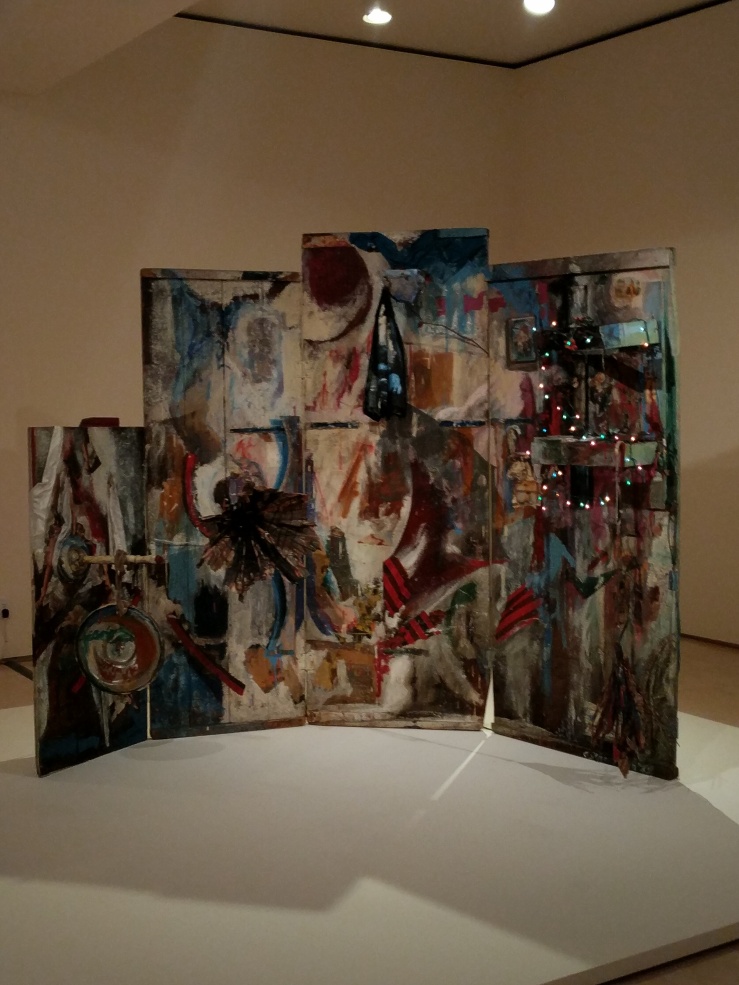
11. Carolee Scheenman, Kinetic Painting (MoMA PS1, NYC) – This expansive retrospective, going back to the ’50s, was a lesson in how not to weaken in rigor, in curiosity, in feeling. Scheenman did almost everything and did it all with blinding heat and depth that continually revealed itself. Shaming and inspiring and astonishing.
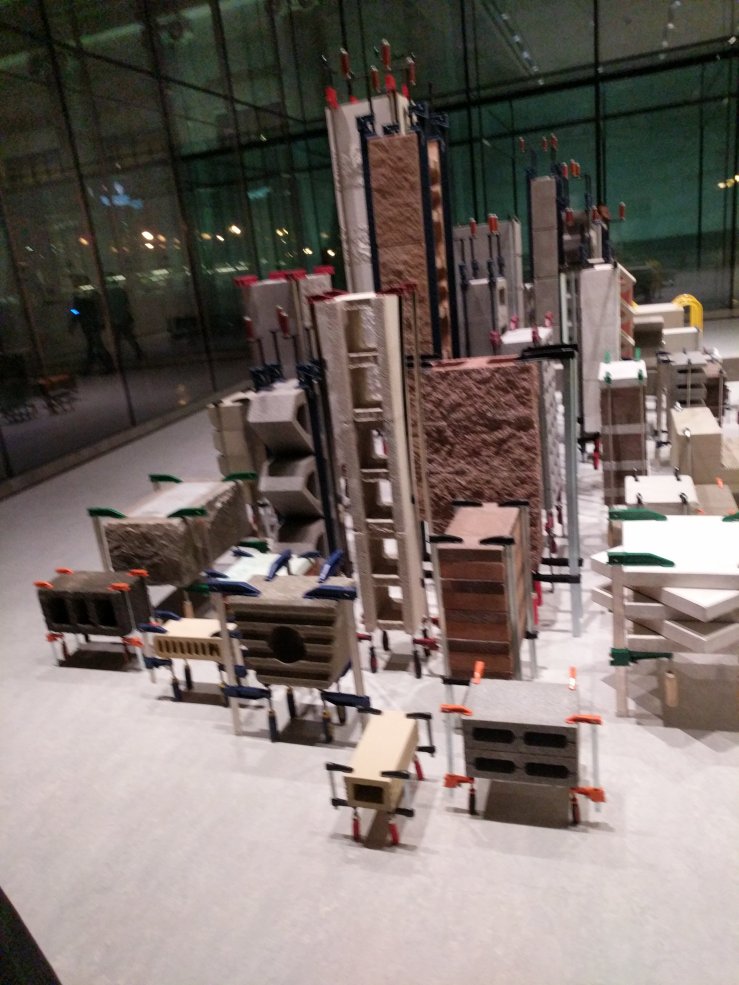
12. Marlon de Azambuja and Luisa Lambri, Brutalismo-Cleveland (Cleveland Museum of Art, Cleveland) – Another piece in the fantastic Front triennial, this collection of local materials in an iteration of de Azambuja’s ongoing series investigating Brutalism paired with Lambri’s photographs in something that was unsettling and perfectly in keeping with its surroundings (not just the Breuer wing of the CMA but Cleveland itself).
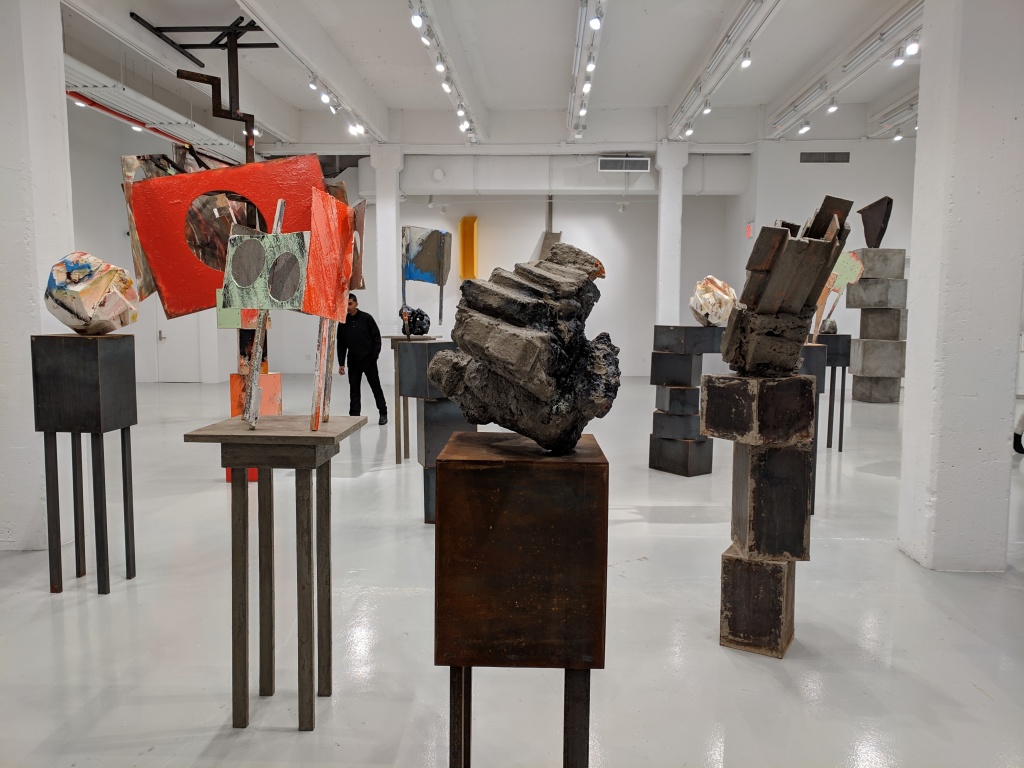
12. Phyllida Barlow, Tilt (Hauser and Wirth, NYC) – There was no shortage of art I saw this year that grappled with the way we in more privileged vantage points have realized the world doesn’t sit on its axis as comfortably as we once thought. Very little did it with the same arresting punch as British artist Barlow. A queasy circus singing a melody in its own voice, a voice that haunts me weeks later and I want to hear more of. Seeing the nods to Brutalism in these pieces transported me to the de Azambuja earlier on the list and the way those two artists of different nationalities exhibiting in different cities and different seasons spoke to one another in my head was a tribute to trying to see as much art as possible.
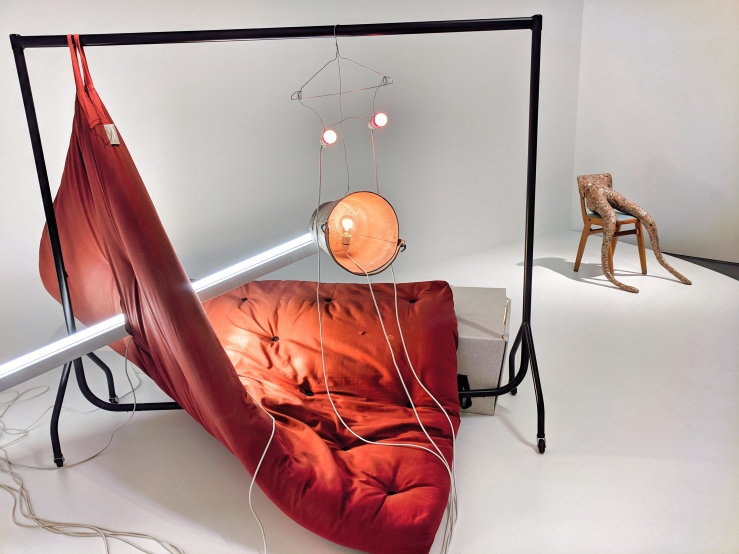
13. Sarah Lucas, Au Naturel (New Museum, NYC) – There’s a recurring theme in what shook me this year: artists I damn sure should have known better. Sarah Lucas epitomizes this, storied career as a sculptor I mostly knew as a name, one of the Young British Artists, with Hirst and Emin. This intense, witty, beautifully vulgar retrospective was everything I want art to be – speaking not just truth to power but a specific, personal, idiosyncratic truth.
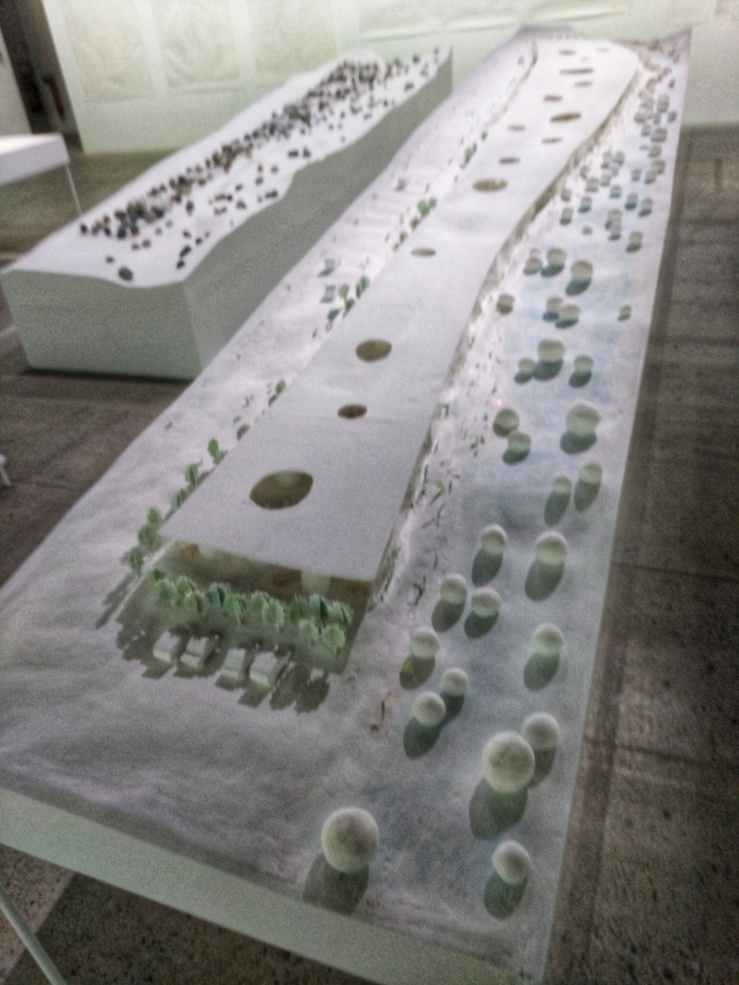
14. Junya Ishigami, Freeing Architecture (Cartier Foundation, Paris) – Most of my first trip to Paris was spent doing exactly what you’d expect – the Louvre, D’Orsay, Centre Pompidou, Shakespeare and Company, wandering boulevards, drinking wine, all spectacular. So I was surprised by how affecting I found this show of a visionary Japanese architect. Breathable open spaces that feel like the future; echoes of ’70s science fiction movies like Silent Running but also evocative of the flowing purity of a Basho line or the meditative canvases of Agnes Martin. I wanted to live here. Paris, sure, but also inside these models.
15. Cyprien Galliard, Nightlife (MOCA, Cleveland) – I’ve been a fan of Galliard’s since the Wex showed his photographs but I’ve never been as enchanted as by the swirling dive into the after-dark of this video installation. Rodin’s The Thinker shattered by a bombing (the version in Cleveland), a tree planted to celebrate Jesse Owens also in Cleveland, fireworks over the site of the 1936 Berlin Olympics where Owens, shuddering plant life around Los Angeles streets, all throbbing to a looped sample of the Alton Ellis classic Blackman’s Song, the original chorus of “I was born a loser” melting into the re-release of “I was born a winner.” I could have stayed there for hours
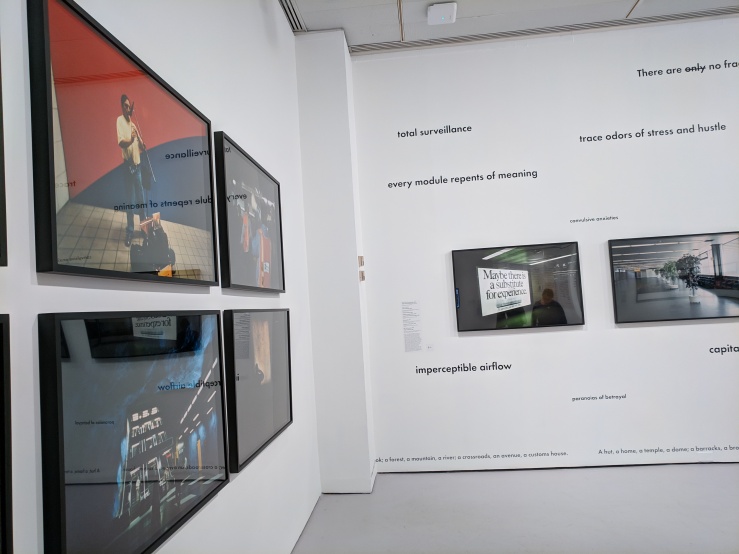
16. Martha Rosler, Irrespective (Jewish Museum, NYC) – Martha Rosler’s acerbic retrospective at the Jewish Museum was the kind of fresh air and reawakening to the atmosphere of terror around us I needed. Steeped in language and sharply aware of the limitations and obfuscations of every vocabulary, this was as immediate and accessible as a slap in the face but also layers upon layers.
17. Susan Phillipsz, A Single Voice (Tanya Bonakdar, NYC) – Phillipsz is the master of the subtle, disorienting environment and one of the finest artists at using sound in a gallery setting. An installation with film of a violin player playing a snatch of score from a Karl-Birgir Blomdahl opera, with 12 speakers bouncing the violin tones through the room and surrounded by canvases caked in salt and named after the Lachrimae. Defying description and intoxicating at the same time.
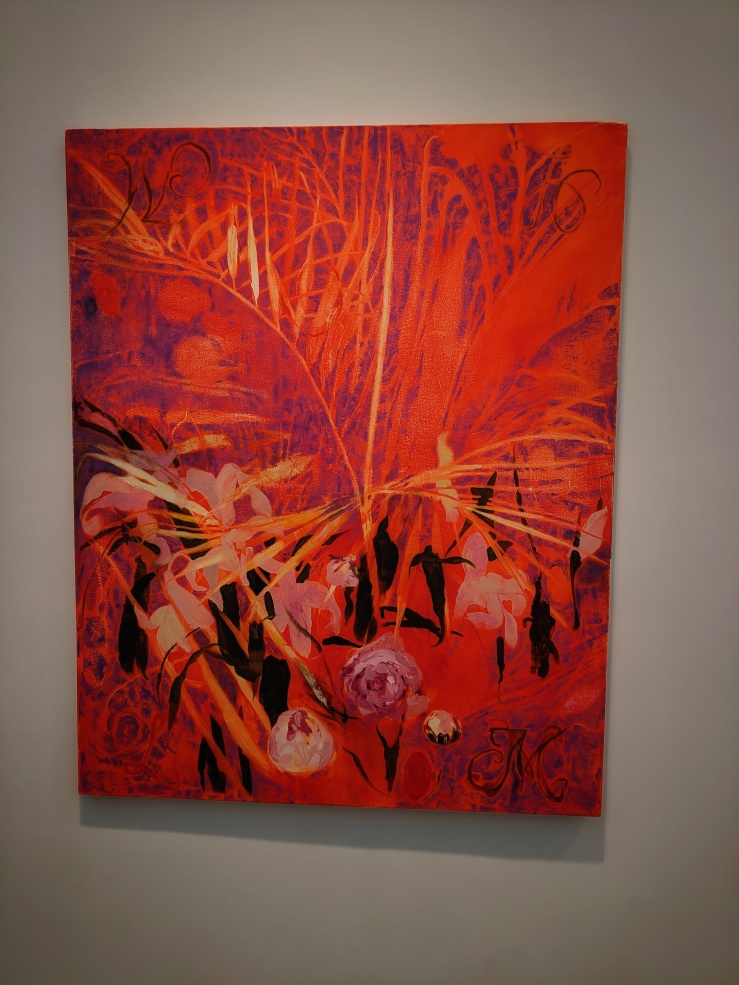
18. Jennifer Packer, Quality of Life (Sikkema Jenkins & Co, NYC) – Packer achieves a balance of the intimate and the explosive that’s unlike any work I’d ever seen. These breathtaking canvases all had an interiority that I found beguiling, coupled with potent colors and surprising juxtapositions that grabbed me by the collar and forced me in off the street.
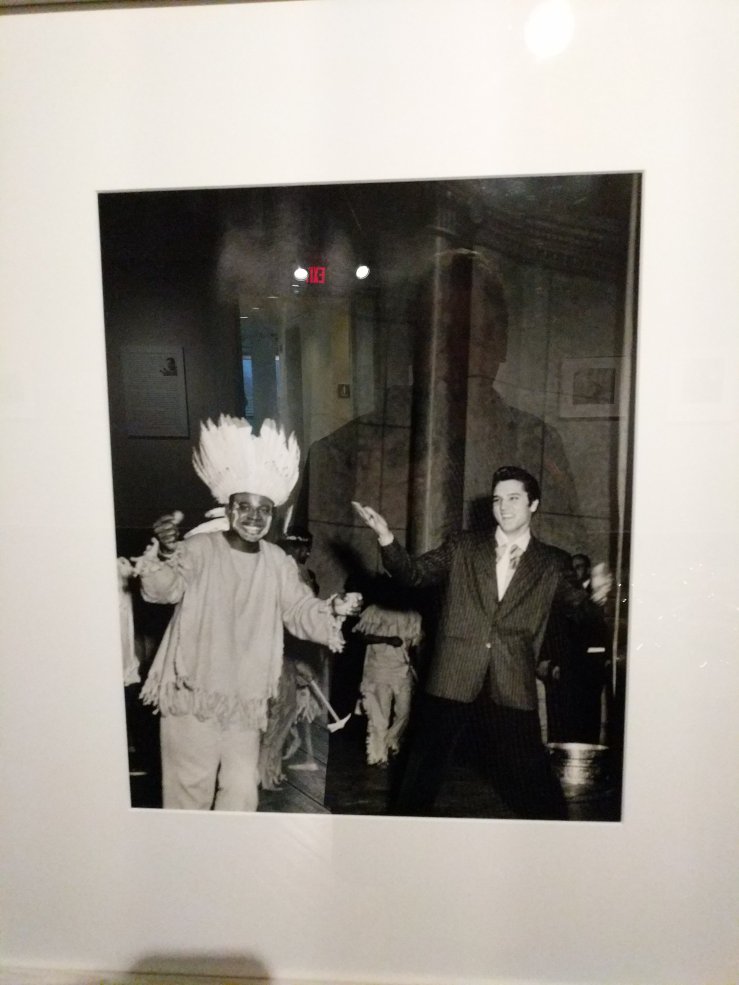
19. Ernest Withers, A Buck and A Half A Piece (Brooks Museum, Memphis) – Everything at the Brooks Museum this trip reminded me why it’s a must-stop in Memphis, the Jaume Plensa work very nearly made this list. But that slice of Memphis photographic history on the main floor wouldn’t let me go. Withers was a master at documenting cultural life (like the photo of Rufus Thomas and Elvis Presley above), civil life (with arresting images of the civil rights movement like the SCLC conference) and day-to-day “ordinary” life the way we should always see them: as parts of the same fabric, not discrete plants grown in their own pots.
20. Various Artists, All Too Human: Bacon, Freud, and a Century of Painting Life (The Tate, London) – It’s no surprise Francis Bacon and Lucian Freud were massive to me from the moment I was first aware of them; so seeing this retrospective on their home turf in my first trip to London was amazing. But more than that, this retrospective accomplished the tricky feat of showing these names as the nucleus of a burgeoning movement without overly inflating or denigrating the lesser-known student works. It painted the kind of picture that normally I’d have to buy the catalog to come close to.